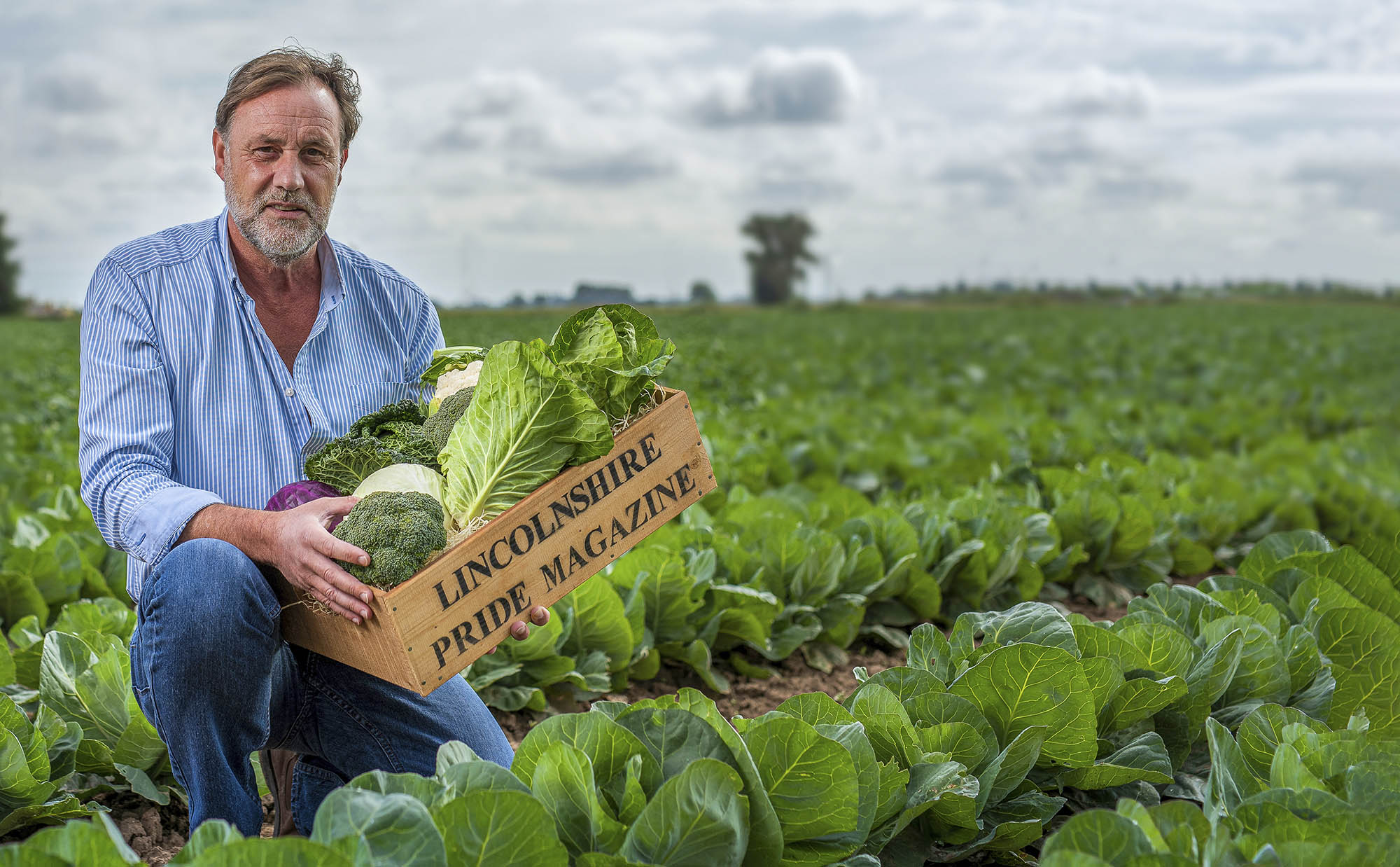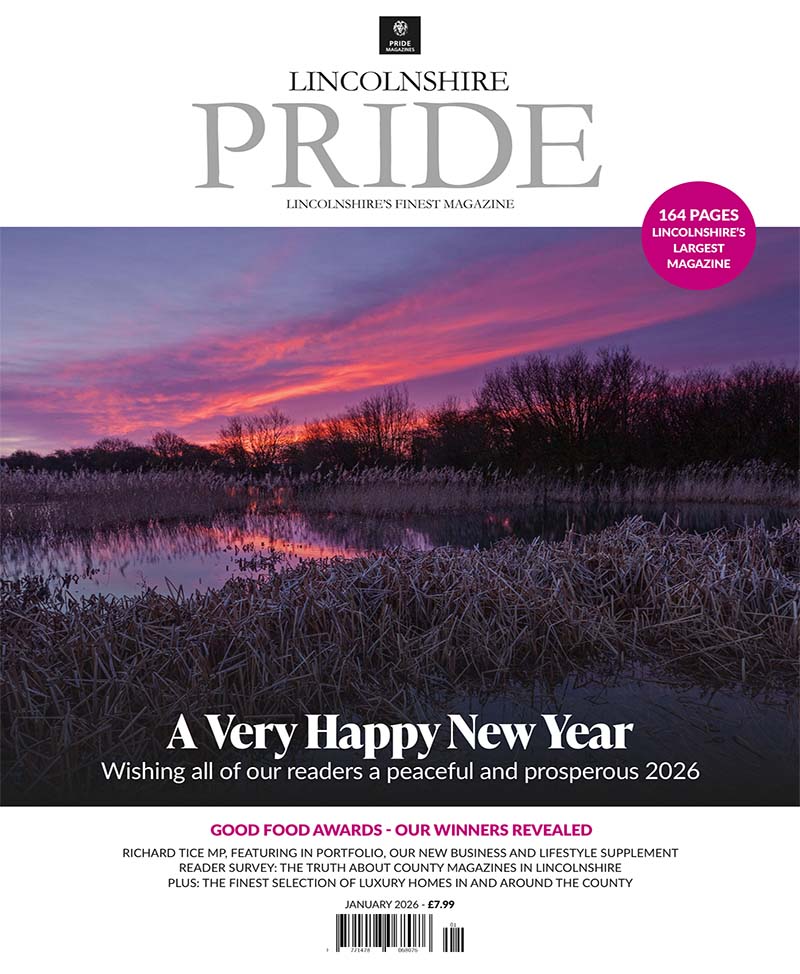
Lincolnshire’s Local Food, Drink and Restaurants…
A is for Asparagus: Asparagus is best when it is fresh and has a tip which is tightly closed, before it begins to flower. This is what you should be looking out for when buying it within supermarkets. Syston Farm near Grantham is home to a field, over two acres in size, which grows this nutritious vegetable. They also use traditional methods for harvesting their crop. Rather than using machines, they have employed two people who cut the asparagus, which is then bundled up and sold locally.
B is for Beer: Batemans Brewery Beer is made using Lincolnshire grown ingredients such as barley. The water in Lincolnshire is best suited for bitters, with Batemans most popular drink being Batemans XB Bitter [3.7%] The water for Batemans brewing liquor comes from Lincolnshire’s Covenham Reservoir. In 1986 Batemans XXXB was awarded Champion Beer of Britain at the Great British Beer Festival.
C is for Cheese: Blessed with three of its own local cheeses and two wonderful cheese shops Lincolnshire is great for cheese lovers. The recipe for Lincolnshire Poacher cheese is a cross between a traditional West Country cheddar and a continental Alpine cheese such as Comte. Lincolnshire’s Poacher Cheese of Alford is absolutely committed to producing the very best cheese with a little help from their 230 Holstein Friesian Cows! Lymn Bank Farm cheese is based in Thorpe St Peter near Skegness and produces about 10,000 cheeses each day in the main dairy which includes 10 types of waxed cheese. This adds up to 120 tonnes of cheese a year. Cote Hill cheese is the only soft cheese to be made in Lincolnshire and is produced on a farm near Market Rasen.
D is for Drink: Lincolnshire provides a range of drinks, alcoholic and non-alcoholic. Pin Gin has rapidly evolved to become one of the county’s most recognised brands and now has a new location, distillery, gin school and tasting room. Belvoir makes naturally delicious cordials, pressés and fruit crushes at its home in the gorgeous Vale of Belvoir countryside. The most popular is their original Elderflower Cordial, which the company says requires eight elderflower heads for each bottle of cordial it produces. This year so far, a total of 60 tonnes of elderflowers which is 3.6 million flower heads have been picked in order to keep up with the high demands of drinks. 2,750,090 bottles this year and counting…
E is for Eggs: Last year, UK egg consumption was 12.2 million eggs, 3% up from the previous year. With 80 units across 17 farms, Lincolnshire’s L J Fairburn & Son Limited may have grown into an enterprise which can now boast at being one of the largest egg producers and packers in the UK. The business now has 5,000,000 laying and rearing hens – 4,000,000 are owned by Fairburn’s and a million are contract producer owned. Rearing in excess of two million pullets every year for their own use and re-sale, the Fairburn family also mill over 80,000 tonnes of feed each year, including grain grown on their 2,000 acre arable farm. Proud to be producing Organic, Free Range, Barn, and Colony eggs for leading UK supermarkets, Fairburn’s now produce and pack over 17 million eggs a week… an egg-straordinary volume!
F is for Fish: To say that Lincolnshire is a prolific contributor to the UK’s seafood industry is rather an understatement. Grimsby alone has over 500-food related companies, and can now boast the £5.6m Humber Seafood institute, home to the Seafish Industry Authority. The seafood industry is worth £1.8bn to North East Lincolnshire.
G is for Gingerbread: Hawken’s Gingerbread has saved the much-loved and well-known biscuit from becoming confined to the history books when husband and wife Alastair & Kerry learned that the production of the biscuit for which their town had always been famous, had fallen out of production. In 1740, William Eggleston opened his bakery in Grantham and accidentally stumbled across the formula for gingerbread when he used the wrong ingredient. Up until the 1970s, Grantham Gingerbread continued to be sold throughout the town by many bakery shops however as the number of bakeries within the town began to dwindle, the places selling the product on their counter tops fell until 2009 when the biscuit was resurrected.
H is for Herbs: Lincolnshire Herbs based in Bourne has a sophisticated and vast facility on the edge of the town covering 20 hectares. Automated sowing, growing, climate control and irrigation mean it’s one of the most cutting-edge herb nurseries in the UK. If you’ve purchased herbs from a supermarket recently then chances are that your herbs began life in Bourne!
I is for Ice-Cream: Dennetts Ice Cream has been manufacturing homemade Lincolnshire Dairy Ice Cream to its own recipe since 1926. The fourth generation, family firm supplies over a hundred shops, cafés and restaurants across Lincolnshire as well as dozens of Lincolnshire Co-op stores. There are over 30 flavours to try.
J is for Jam: Jenny Smith of Jenny’s Jams is a trained chef and has been making her award-winning fruit preserves for over 10 years. Created in Lincoln, Jenny uses local fresh ingredients where possible and is now fulfilling regular orders from the Lincolnshire Co-operative Society.
K is for Kale: Most British kale is grown in Lincolnshire, where the rich, moisture-retentive soil suits brassicas particularly well. Kale is an excellent source of vitamins K, A and C, as well as containing useful amounts of manganese, copper and phytochemicals, believed to help against certain types of cancer. One grower, Staples Vegetables, employ around 600 people and believe to be the largestsingle production unit of brassicas in Britain. The firm’s long-term strategy is acquisition and investment in the best farms available, in order to deliver the highest possible quality, availability and value to their customers, the brassica firm says.
L is for Livestock: From medieval times, sheep and cattle were walked all the way from the Wolds to the coast to spend the summer fattening on the rich pasture of the marshes. More recently, cattle came by train as far as Mumby Road Station. Today, there are very few sheep in the county, but the grassland is still good, and you will see both dairy and beef cattle like the native Lincoln Red here.
M is for Mills: Last month in Pride we looked at Lincolnshire’s working mills, which are continuing to provide us with stoneground flour for those who enjoy home baking. The Maud Foster Mill in Boston is one of the largest operating windmills in England being 80 feet tall to the cap ball.
N is for New Potatoes: The Boston area is famous for its early new potato production, much the same as a Jersey Royal crop. This is because of the relatively comparative dry climate and unique silty, light soils. New potatoes come from special varieties of early maturity. The seed is planted as soon as the soil is dry enough after winter, often grown under soil warming polythene for extra earliness. A true new potato is harvested from around in late spring or early summer when the crop is still immature and the tops are lush green, giving them the delicate, sweet and distinctive flavour. The sign of a true new potato is when the skins easily rub off before cooking. This is because they are still young and have not ‘set’ their skins yet. New potatoes are very often confused with main season salad potatoes which are grown to be a small set skin potato, though they do not have the same flavour… because they are small does not always mean they are ‘new’! South Holland alone accounts for 5% of the English potato production area.
O is for Ostrich: Ostrich Farming at White House farm in Lincolnshire started in 1994 being one of the first Ostrich Farms in the UK. With 27 breeding Ostriches laying one egg every other day during the season, from April to August. Six weeks later chicks hatch and are the size of a small chicken! They will live together in groups of 10 – 12 and stay in this family group for the rest of their lives.
P is for Pumpkins: David Bowman is Europe’s largest pumpkin grower. From his farm near Spalding in Lincolnshire, he grows and sells two million pumpkins each year to supermarkets in the UK, and to other suppliers across Europe. His pumpkin facility was built in 1997 and has recently been extended to cope with increased demand. The company has supplied thousand pumpkins for two display events in Paris, and he also supplies for the Spalding Pumpkin Festival.
Q is for Quinoa: Long Sutton based Dunns have a three year contract to process the UK’s quinoa crop, farming in Shropshire. The company has been producing 20 tonnes of quinoa since 2013. From Lincolnshire’s factories grocers like Waitrose and chains such as Pret à Manger are supplied.
R is for Restaurants: Lincolnshire has a wealth of restaurants – that’s why we’re seeking to promote the very best of them with our Good Food Awards, which includes our Restaurant of the Year title. Vote for your favourite restaurants and you could win free dining out throughout 2020. See later in this edition for more information!
S is for Sausages: The earliest recorded reference to a recipe for a Lincolnshire sausage dates back to May 1886. However, the award-winning Grimsby butcher John Petit has claimed that his family recipe is the first, dating back to 1810. The Lincolnshire sausage has an annual festival, dedicated to it, held every October in the grounds of Lincoln Castle and Lincoln Cathedral.
T is for Tea & Coffee: Stokes Tea and Coffee all began in 1892 when Robert William Stokes, moved to the city of Lincoln. Four generations, and many a brew later, they remain strong. John and Susie Carlisle have created the county’s own Lincolnshire blend of tea in 2017.
U is for Unrefined Sugar: 20% of the UK’s sugar beet is grown in Lincolnshire; enough to make 200m bags of sugar a year. Sown in the spring to grow through the summer, the harvested crop travels on average 28 miles to one of British Sugar’s four processing plants in Bury St Edmunds, Cantley, Newark and Wissington.
V is for Vegetables: Lincolnshire is one of the country’s prime agricultural areas – farmers grow over 12 per cent of the UK’s potato crop and 30 per cent of its field vegetables including brassicas like kale, cabbage and broccoli plus carrots, peas and onions.
W is for Wine: Lincolnshire has three commercial Vineyards. Ovens Farm Vineyard in Louth is the most well-known with five acres of vines. Lincolnshire is more prodigious than other counties as a UK wine producer.
X is for Xmas! Just one supermarket chain alone claims to sell 140,000,000 brussels sprouts in the two-week run up to Christmas. Many people are also unaware that there are fewer than 110 varieties in total. TH Clements and Staples begin their hard work in early Spring when their crop is planted out in greenhouse modules and planted out into the fields in May and harvested from as early as August.
Y is for Yellow: Fields across Lincolnshire are packed with the bright yellow flowers of oilseed rape. Around 400,000 hectares of oilseed rape is grown annually in the UK; one eighth of the area of wheat.
Z is for Zero Waste: As the country works towards the elimination of plastic the new material is emerging for packaging that is the by-product of potatoes. This means that it will decompose to nutrients for the soil in only two months when it ends up in the nature. Championing the cause is James Dyson one of Britain’s biggest farmers and owner of Beeswax Dyson Farming in Lincoln.
Lincolnshire Farming in Numbers…
Lincolnshire farmers generate £1.3bn from all the livestock, crops and produce they grow.
Lincolnshire farmers farm 73% of the land area of the county.
Lincolnshire farming and growing directly employs more than 13,500 people.
Lincolnshire grows 11% of the country’s wheat – enough to make 2bn loaves of bread a year.
Lincolnshire farmers grow enough barley to make more than 3bn pints of beer per year.26% of England’s vegetables and leafy salads are grown in Lincolnshire.
Lincolnshire farmers produce enough turkeys annually to feed more than 8,000,000 people their Christmas dinners.
Farmers help maintain 2,940 miles of rights of way in Lincolnshire.
Lincolnshire farmers grow enough oats to make 400m bowls of porridge – enough to feed more than 10m people breakfast every single day for a year.
20% of our sugar beet is grown in Lincolnshire – enough to make 200m bags of sugar a year.
We grow 40% of England’s cut flowers and bulbs in Lincolnshire.
Lincolnshire houses more than 12% of the country’s total poultry population and produce 500m eggs a year.
Lincolnshire farmers look after more than 10,000 hectares of farm woodland, providing a home to various species and biodiversity.
66% of Lincolnshire is cared for in environmental schemes.
There are more than 168,000 pigs in the county.
Lincolnshire dairy farmers produce over 45,000,000 litres of milk a year.






